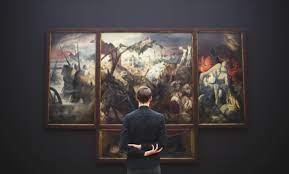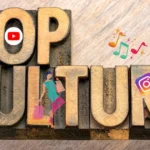Art has long been hailed as a captivating mirror that reflects the essence of culture. It serves as a profound medium through which the values, beliefs, and aspirations of a society are showcased and perpetuated across generations. The intricate interplay between art and culture unravels a captivating tale of human expression, shaping and shaped by the world around it.
Throughout history, art has functioned as a vivid testimonial, providing glimpses into the hearts and minds of civilizations. From the awe-inspiring cave paintings of Lascaux to the grandeur of Renaissance masterpieces, each stroke of the artist’s brush has carried profound meaning, capturing the spirit of its time. The vibrant tapestries, sculptures, and architectural marvels of ancient civilizations stand as timeless witnesses to their cultural mores and societal values.
Art not only reflects but also amplifies the zeitgeist of an era. In times of turbulence, artists have emerged as social commentators, bravely challenging the status quo and pushing the boundaries of acceptability. Movements like Dadaism and Cubism in the early 20th century shattered conventional norms, reimagining reality through fragmented forms and absurdist expressions. Their audacious creations mirrored the disillusionment and fragmented nature of a post-World War I society.
The relationship between art and culture extends beyond mere reflection. Art has the power to shape and mold culture, acting as a catalyst for change. Iconic works like Picasso’s “Guernica” or Maya Lin’s Vietnam Veterans Memorial evoke powerful emotions, galvanizing public sentiment and catalyzing social movements. Artists have harnessed the transformative potential of their creations, shedding light on social injustices, promoting inclusivity, and advocating for human rights. Through their art, they challenge prevailing norms and champion the emergence of a more enlightened society.
Contemporary contexts witness a diverse range of artistic expressions, each intimately connected to the pulse of its cultural milieu. In the digital age, technology has opened new vistas for artists to explore and redefine their relationship with society. Digital art, virtual reality installations, and interactive media provide immersive experiences that engage the viewer in a dialogue with the art itself. This convergence of art and technology not only mirrors the hyper-connected nature of our modern world but also challenges traditional notions of artistic boundaries.
Furthermore, the globalized nature of today’s society has led to a rich tapestry of artistic influences, blending and intertwining cultural expressions from around the world. This cross-pollination of ideas and aesthetics fuels innovation, giving rise to hybrid art forms that defy categorization. Artists from diverse backgrounds, often marginalized by mainstream narratives, have found platforms to share their stories, amplifying their cultural heritage and challenging dominant paradigms.
Art as a reflection of culture is an ever-evolving dynamic, constantly adapting to the changing tides of society. As our world continues to grapple with complex issues, art remains an indomitable force, providing solace, inspiration, and provocation. It serves as a profound testament to our shared humanity, unifying diverse cultures and transcending linguistic and geographical barriers.
The relationship between art and culture is symbiotic and profound. Art both reflects and shapes societal values, beliefs, and aspirations, acting as a powerful conduit for human expression. From the ancient to the contemporary, art continues to captivate our imaginations, offering a window into the soul of humanity. Its enduring presence reminds us of the inherent beauty and complexity of our collective existence, urging us to reflect, question, and celebrate the world in which we live.




